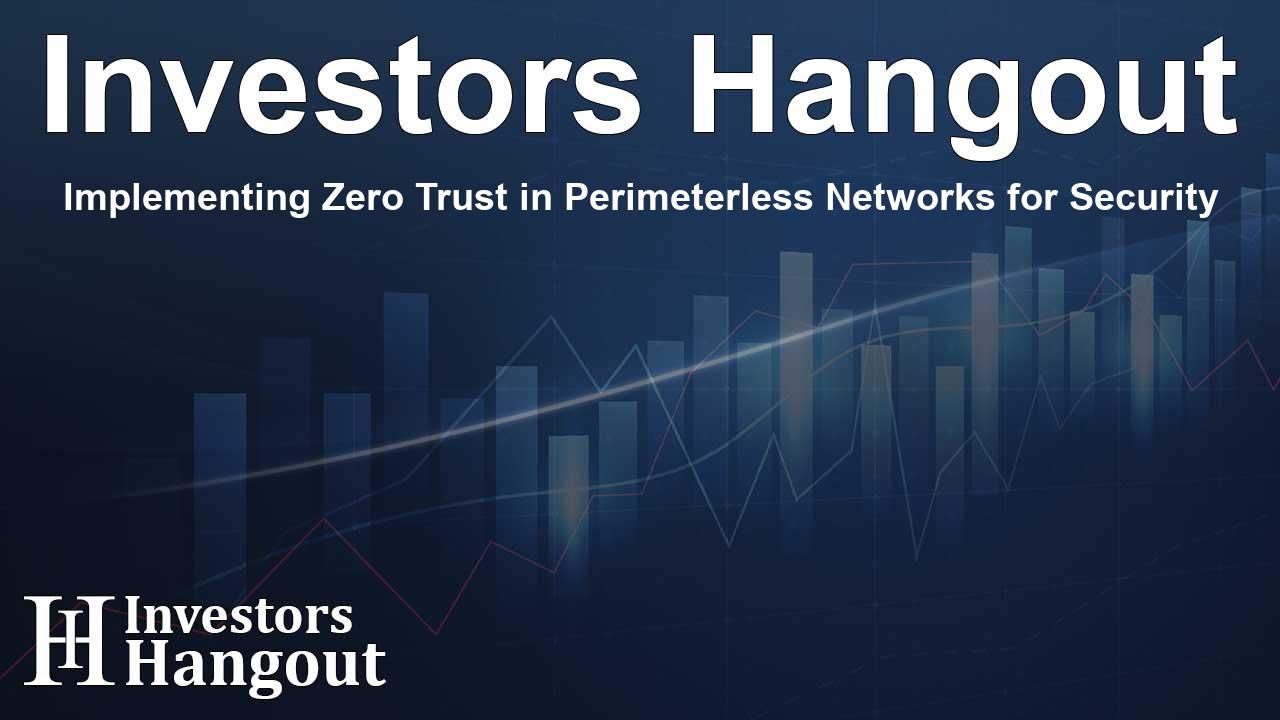Implementing Zero Trust in Perimeterless Networks for Security

Understanding the Zero Trust Security Model
As organizations face the challenge of a perimeterless network, adopting a zero trust security model has never been more crucial. A recent blueprint from Info-Tech Research Group provides valuable insights into implementing this model to secure identities, applications, and sensitive data in today’s hybrid work environments. With the increase in remote work and the rise in cyber threats, security leaders must rethink their strategies and address the widening attack surfaces.
The Impact of Hybrid Work on Security Challenges
The shift to hybrid work has blurred traditional network boundaries, making it essential for security leaders to establish robust strategies that protect digital environments. This complexity arises from not only the various devices and locations from which employees access sensitive information but also the integration of cloud services, which often complicate security protocols. The new environment requires a strategic revision to security approaches to effectively navigate these challenges.
Overcoming Legacy Mindsets
One of the primary barriers to transitioning to a zero trust model is the prevalence of legacy mindsets in organizations. Many security leaders continue to cling to outdated strategies that do not align with the realities of modern security threats. The Info-Tech Research Group emphasizes that to protect digital ecosystems effectively, organizations must adopt a modern perspective focused on identity, data, and application integrity regardless of their physical locations.
Pollution of Data Silos and Complex Systems
In addition to legacy mindsets, many organizations face challenges stemming from data silos and complex systems that hinder interoperability. These barriers complicate the visibility needed to implement effective zero trust strategies. By streamlining data management and ensuring that security measures apply consistently across all platforms, organizations can mitigate these challenges and enhance their security posture.
Key Control Areas for Zero Trust Implementation
In its detailed blueprint, Info-Tech Research Group suggests focusing on several key control areas when designing a zero trust architecture. Understanding these components is vital for organizations as they navigate the challenges of a perimeterless network.
- Identities: Establish clear user identities and roles, enforce access controls, and implement multifactor authentication for enhanced security.
- Devices: Ensure devices are secured and monitored, with access privileges rigorously controlled and defined.
- Applications: Segment applications according to workflows, minimizing administrative access to mitigate risks.
- Infrastructure: Build a robust infrastructure with continuous monitoring systems that can alert on anomalies immediately.
- Network: Treat the internal network as a non-trust zone, requiring authentication and authorization for access.
- Data: Implement strong encryption protocols for data in transit and at rest, with clear policies around data usage and access.
Info-Tech’s guidance illustrates that zero trust is not a singular product but a holistic approach that combines various capabilities. Leaders in the security domain need to thoroughly understand this architecture to implement effective strategies for protecting their perimeterless networks.
Moving Toward a Zero Trust Future
As the threat landscape continues to evolve, the adoption of a zero trust security model is paramount for organizations that want to secure their networks against emerging threats. This model not only enhances security posture but also provides organizations with a framework through which they can navigate the complexities of securing identities, data, and applications effectively.
For professionals seeking insightful commentary from experts in the field and further details on the Secure Your Perimeterless Network blueprint, it's essential to stay informed about best practices and strategic frameworks to reinforce organizational security.
Frequently Asked Questions
What is a zero trust security model?
The zero trust security model is an approach that requires strict identity verification for every person and device trying to access resources on a private network, regardless of whether they are inside or outside the network perimeter.
Why is zero trust important for hybrid work environments?
As hybrid work environments blur traditional network boundaries, adopting zero trust helps protect sensitive data and applications from increasingly sophisticated cyber threats.
What are the key control areas in zero trust?
Key control areas include identities, devices, applications, infrastructure, network segmentation, and data encryption, which all contribute to a secure zero trust architecture.
How can organizations overcome challenges in transitioning to zero trust?
Organizations can overcome these challenges by addressing legacy mindsets, improving data interoperability, and adopting strategic guidance to focus on identity-centric security approaches.
What role does encryption play in zero trust?
Encryption is vital for protecting data in transit and at rest, ensuring that sensitive information remains secure from unauthorized access, a fundamental aspect of the zero trust model.
About Investors Hangout
Investors Hangout is a leading online stock forum for financial discussion and learning, offering a wide range of free tools and resources. It draws in traders of all levels, who exchange market knowledge, investigate trading tactics, and keep an eye on industry developments in real time. Featuring financial articles, stock message boards, quotes, charts, company profiles, and live news updates. Through cooperative learning and a wealth of informational resources, it helps users from novices creating their first portfolios to experts honing their techniques. Join Investors Hangout today: https://investorshangout.com/
Disclaimer: The content of this article is solely for general informational purposes only; it does not represent legal, financial, or investment advice. Investors Hangout does not offer financial advice; the author is not a licensed financial advisor. Consult a qualified advisor before making any financial or investment decisions based on this article. The author's interpretation of publicly available data shapes the opinions presented here; as a result, they should not be taken as advice to purchase, sell, or hold any securities mentioned or any other investments. The author does not guarantee the accuracy, completeness, or timeliness of any material, providing it "as is." Information and market conditions may change; past performance is not indicative of future outcomes. If any of the material offered here is inaccurate, please contact us for corrections.